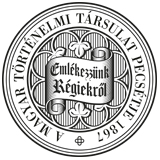Századok – 2021
2021 / 2. szám - VIDÉKI TÁRSADALOM ÉS PERCEPCIÓI A 18-20. SZÁZADBAN - Jankó Ferenc: Változó földrajzi nézőpontok: Burgenland és Nyugat-Magyarország az első világháború előtt és után
VÁLTOZÓ FÖLDRAJZI NÉZŐPONTOK: BURGENLAND ÉS NYUGAT-MAGYARORSZÁG identitás-konstrukció számára.71 A kép azonban itt is egyszerűsödni látszott: az Anschluss után felosztott, majd 1945-ben újraalakított tartománynak már nem volt reális félnivalója a tartományi önállóság elvesztése kapcsán. Tennivaló azonban maradt bőven az identitáspolitikát megalapozó történészek és földrajztudósok számára: elősegíteni Burgenland mind szorosabb integrációját Ausztriával, anyagi és szellemi tekintetben egyaránt.72 71 Andrew E Burghardt: Borderland: A Historical and Geographical Study of Burgenland, Austria. Madison 1962. 72 RolandWidder: Under Construction. Achzig Jahre Identität im Burgenland. Historicum Zeitschrift für Geschichte 67. (2000) 18-21.; Franz Artner: Land der Dörfer und Häuslbauer. Burgenland, das Land der Dörfer? In: Burgenland. Vom Grenzland im Osten zum Tor in dem Westen. Hrsg. Roland Widder. (Geschichte der österreichischen Bundesländer seit 1945) Wien-Köln-Weimar 2000. 277-316. VARIED GEOGRAPHICAL PERSPECTIVES: BURGENLAND AND WESTERN HUNGARY BEFORE AND AFTER WORLD WAR I By Ferenc Jankó SUMMARY The aim of the paper is to examine through a number of selected examples the images that the Austrian and Hungarian geographical works in the period of dualism and between the two world wars projected about Western Hungary and Burgenland. It proves that the Austrian authors gradually became aware of the German character of the region’s population, and consequently prepared the set of knowledge that was already at hand at the end of World War I in order to provide historical and geographical arguments for the detachment of Deutschwestungarn. On this basis, there was an explosion of scholarly works in Burgenland in the interwar period, a mass production that was observed critically by the communities of Hungarian geographers and historians. At the same time, the paper also reflects on the regional otherness and „inviability” of Burgenland within the Austrian state, an interesting phenomenon in view of the fact that prior to 1920-1921 Germaninhabited Western Hungary was reckoned among the most developed regions. 370
